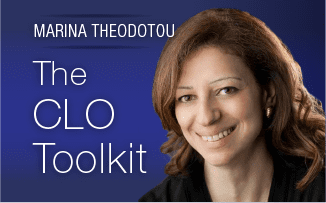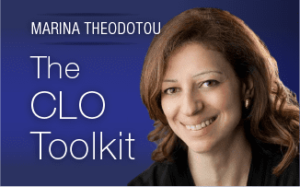
 As a chief learning officer, how do you lead organizational change? There are several tried and tested approaches and techniques, but they can be time consuming to find and structure.
As a chief learning officer, how do you lead organizational change? There are several tried and tested approaches and techniques, but they can be time consuming to find and structure.
I’ve assembled 10 research-based steps to guide you. Many of these steps will be familiar, others may be new, but they have been gleaned and curated with the CLO in mind from my research and doctorate of education studies at the University of Southern California. They are:
- Engage in your organization’s strategic planning and goal setting process.
- Engage your team in reviewing, discussing and analyzing organizational change case studies to distill key learnings that can be adopted and adapted in your organization.
- Review the Plan-Do-Study-Act model with your team and decide how you can use it in your organization.
- Listen to and engage your team in the strategic planning process to review, revise and adapt performance plans with new and meaningful metrics to measure progress toward stretch goals.
- Focus on organizational change through the knowledge, motivation and organization framework.
- Remember that change is nonlinear.
- Check out the Knowledge-Motivation-Organization model by Clark & Estes.
- Draft a plan for organizational change focusing first on motivation, then on the organizational structure and last on the knowledge and skills needed.
- Build a learning organization.
- Champion creativity and innovation in your organization and empower the workforce to see learning and development challenges from different angles.
- Establish metrics to measure learning, creativity and innovation in your organization.
- Monitor and report changes in learner needs, and assess barriers to change.
- Initiate qualitative and quantitative research for evidence to drive organizational change.
- Do not rely only on surveys or conversations to understand the real issues.
- Ask the right questions, and listen more.
- Cross-pollinate data results, it’s a tried and tested classic approach to uncover the real issues.
- Champion trust and engagement to detect silence and resistance.
- Know thyself.
- Stand by your values and walk the talk all the time.
- Be unwavering when it comes to doing the right thing.
- Manage conflict and polarity.
- Conflict can be a good thing if you address it on time and in an objective manner.
- Conflict cannot always be problem-solved by closing the gap from A to B.
- Explore and engage in polarity management to address unsolvable problems.
- Over communicate during organizational change.
- Engage your direct reports by building trust and communicating continuously.
- Coach and mentor your team to empower them and help them grow as leaders.
- Overcommunicate with as much transparency as possible when change is coming, is being implemented or has failed.
- Steer motivation, rewards and recognition.
- Ensure your organization differentiates between rewards and recognition.
- Establish separate rewards policies and procedures.
- Establish separate recognition policies and procedures.
- Revamp archaic policies and procedures.
- Review and revamp learning and development policies and procedures to ensure they are succinct, practical, implementable and value-adding.
- Engage your team to establish metrics to ensure learning and development procedures are measurable and can impact the bottom line.
- Get out of your own way to facilitate organizational change.
- Listen to trusted advisers and team members.
- Communicate both the challenges and the opportunities of a decision.
- Be willing to pivot.
Marina Theodotou is the director for professional development at the Computer Science Teachers Association. Comment below, or email editor@CLOmedia.com.



